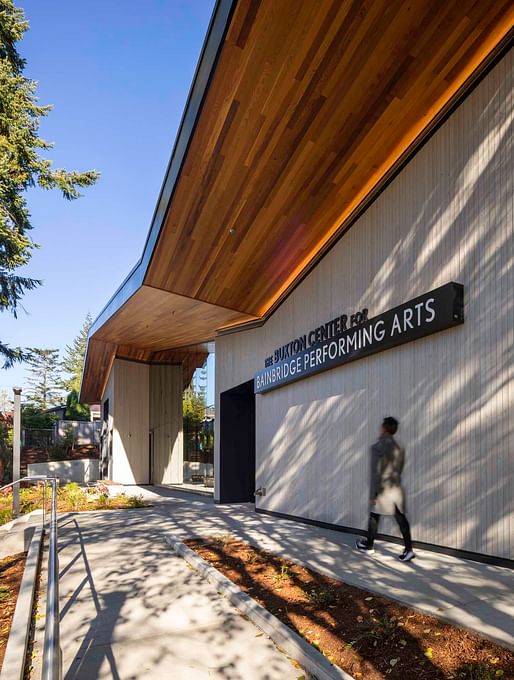
LMN Architects has completed an extensive renovation and expansion of the Buxton Center for Bainbridge Performing Arts on Bainbridge Island, Washington. Described by the team as marking “a new era for performers and the arts community in the Pacific Northwest,” the center has been upgraded with a renovated main auditorium and lobby.

Visitors to the center are greeted by a new two-story lobby enclosed by a wood and glass curtain wall, responding to the site’s woodland context. Above, a wave-form roof and ceiling plane displays an exposed wood structure, tying the new program spaces together to give the building a clear identity.


“The roof and ceiling plane echoes the region’s architectural vernacular and is expressive of the building program,” said LMN Architects principal Mark Tumiski about the scheme. “We took advantage of the scale and tectonic identity of the original structure and leveraged the dynamic environmental qualities of sun, rain, and views that define Bainbridge Island to design a building that respects both the site and the local arts culture.”

Inside the renovated auditorium, a reconfigured seating bowl is designed to enhance sightlines and improve accessibility. The auditorium also features new finishes and energy-efficient lighting alongside revitalized support spaces and building systems.

Throughout the center, natural tones and material choices seek to create a “connection to the island’s history and ecology.” Wood hues and accents in the lobby ceiling and floors are contrasted by blackened steel fixtures, while the auditorium entrances are marked by red highlights. Elsewhere, the center’s new community gathering space is furnished with a custom-built bar and concession area produced by a local woodworker using salvaged timber from the Bloedel Reserve.

“Glass, wood, and steel create a composition of dynamic spaces and reflect the image of The Buxton Center,” Tumiski added. “Everyone will have an opportunity to experience the new interior spaces organized around the main lobby, animated with the changing seasons, natural light, and the energy of performance.”

To reduce cooling needs, the existing native tree cover on the site has been preserved while the center itself features deep roof overhangs above cedar siding. The center’s sustainability strategy, targeting LEED Gold, also includes LED lighting throughout, low-flow plumbing fixtures coupled with heat pump water heaters, and enhancements and expansion of an existing rain garden.
No Comments
Block this user
Are you sure you want to block this user and hide all related comments throughout the site?
Archinect
This is your first comment on Archinect. Your comment will be visible once approved.